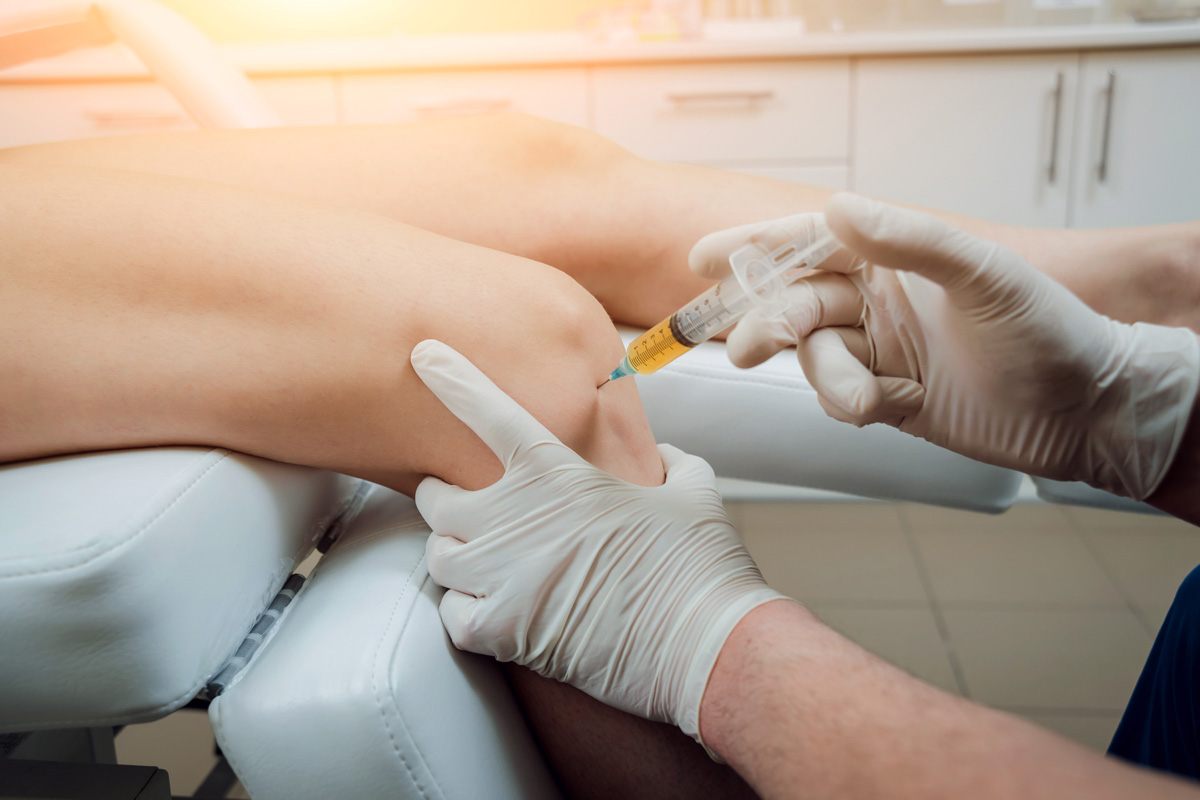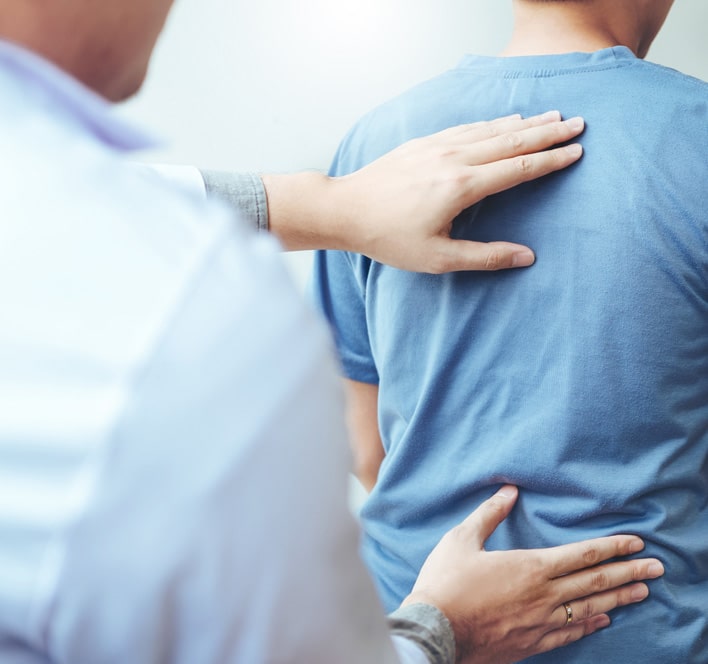In the realm of orthopedics, the advancement of non-surgical procedures has evolved significantly, opening new avenues for pain management and rehabilitation. These treatments, ranging from physical therapy to innovative techniques like platelet-rich plasma and prolotherapy, offer a less invasive alternative to surgical intervention. Yet, as diverse as these options are, the question remains: how efficient and effective are these non-surgical procedures in the long-term management of orthopedic conditions? It is this pertinent question that warrants further exploration and analysis.
Understanding Non-Surgical Orthopedics
Non-surgical orthopedics, a specialized branch of medicine, focuses on the diagnosis and treatment of musculoskeletal disorders using non-invasive techniques. It aims to alleviate pain, improve function, and enhance the quality of life for patients suffering from orthopedic conditions, while avoiding the risks and recovery periods associated with surgical interventions.
The field employs a variety of orthopedic diagnostics to accurately identify the nature and extent of musculoskeletal disorders. These may include physical examinations, imaging technologies such as X-rays, MRI scans, and ultrasound, and laboratory tests. Once a diagnosis is made, a personalized treatment plan is devised based on the patient’s specific needs and conditions.
Non invasive treatments play a pivotal role in non-surgical orthopedics. They encompass a wide range of options, from medication management to injections, braces, and orthotic devices. These treatments aim to reduce pain, increase stability and mobility, and prevent further injury or deterioration, without the need for surgical intervention.
Physical Therapy Explained
Delving into the realm of physical therapy, it is a crucial component of non-surgical orthopedics that focuses on using specific exercises, manual therapy, education, and modalities to facilitate movement and function in patients with orthopedic conditions. This therapeutic approach is designed to alleviate pain, enhance mobility, and improve overall physical health.
Physical therapy typically involves an array of strategies such as:
- The use of Therapy Equipment like resistance bands, weights, and exercise balls to strengthen muscles and increase flexibility.
- Home Exercises are an essential part of physical therapy. These routines are tailored to the individual’s needs and can be performed outside the clinical setting to expedite recovery.
- Manual therapy involves the therapist using their hands to mobilize joints and soft tissue to improve circulation and relieve pain.
- Patient education is integral to therapy. Patients are taught about their conditions, how to prevent further injuries, and how to manage existing conditions.
- Various physical modalities such as heat, cold, ultrasound, and electrical stimulation are used to alleviate pain and accelerate healing.
The Role of Chiropractic Care
In the spectrum of non-invasive orthopedic treatments, chiropractic care plays a pivotal role, primarily focusing on the diagnosis and treatment of mechanical disorders within the musculoskeletal system, particularly the spine. This specialized branch of healthcare emphasizes non-surgical methods, and its practitioners – chiropractors, often employ manual adjustment or manipulation of the spine to improve functionality and patient’s quality of life.
Despite its effectiveness, various chiropractic myths persist, leading to misconceptions about its safety and efficacy. These unfounded beliefs often deter people from benefiting from chiropractic care. Contrary to common misconceptions, chiropractic treatments are not painful but provide relief from discomfort. They are not only for back pain but cater to a range of musculoskeletal issues.
Importantly, chiropractic for seniors has shown significant benefits. Age-related degenerative changes often lead to conditions such as osteoarthritis and spinal stenosis. Chiropractic care can help alleviate these symptoms, improving mobility, pain management, and overall wellness. Furthermore, regular chiropractic care aids in maintaining balance and coordination in seniors, reducing the risk of falls.
Exploring Acupuncture in Orthopedics
Just as chiropractic care offers non-invasive relief for musculoskeletal disorders, acupuncture, another orthopedic procedure devoid of surgery, provides its own unique set of benefits for patients grappling with similar conditions. Acupuncture, originating from traditional Chinese medicine, has been increasingly accepted in Western medicine due to its effectiveness and minimal side effects.
Despite its growing acceptance, there are numerous acupuncture myths that still prevail. These misconceptions often deter potential patients from considering acupuncture as a viable treatment option. Some of these myths include:
- Acupuncture is painful
- Acupuncture only provides a placebo effect
- Acupuncture is not supported by scientific evidence
- Acupuncture is only useful for pain management
- Acupuncture conflicts with Western medicine
In debunking these myths, it’s crucial to highlight the successful integration of Eastern medicine into Western healthcare, particularly in orthopedics. Acupuncture has been scientifically proven to stimulate healing, ease chronic pain, and promote overall wellness. It complements Western medicine by offering a holistic approach, addressing not just the symptoms but the root cause of the ailment. The inclusion of acupuncture as a non-surgical orthopedic procedure is a testament to its efficacy and the growing acceptance of Eastern therapies.

Benefits of Occupational Therapy
Occupational therapy (OT) plays a vital role in orthopedic procedures without surgery by enhancing daily functioning skills and improving mental health. It focuses on patient-centered care, helping individuals regain their independence and improve their quality of life. The following discussion will explore the specific benefits of OT, underlining its importance in non-surgical orthopedic treatment plans.
Enhancing Daily Functioning Skills
Enhancing daily functioning skills through occupational therapy offers numerous benefits, such as improved mobility, increased independence, and better quality of life. This practice is especially beneficial for those undergoing non-surgical orthopedic procedures. This is achieved by integrating elements like orthopedic nutrition and the use of assistive devices into the patient’s daily routine.
Key aspects of the occupational therapy program include:
- Designing an individualized program that meets the patient’s unique needs
- Providing orthopedic nutrition advice to promote healing and bone health
- Training in the use of assistive devices to foster self-sufficiency
- Developing strength and endurance exercises to improve mobility
- Teaching techniques to manage pain and prevent injury
These are instrumental in improving the patient’s ability to perform daily tasks independently, therefore enhancing their overall quality of life.
Mental Health Improvement
Beyond the physical benefits, occupational therapy also plays a crucial role in mental health improvement, offering a holistic approach to patient care. A key component of this is the incorporation of stress reduction strategies. Occupational therapists work closely with patients to develop personalized plans that can often include mindfulness techniques. These techniques are scientifically proven to reduce anxiety, improve mood, and enhance overall mental well-being. They promote a heightened sense of awareness and acceptance of one’s thoughts and feelings, thereby contributing to improved mental health. Moreover, by addressing the emotional and cognitive aspects of a patient’s condition, occupational therapy can significantly reduce the psychological stress associated with dealing with chronic pain or disability. Thus, it plays a pivotal role in mental health improvement.
Steroid Injections and Relief
Steroid injections present a viable non-surgical alternative in orthopedic therapy, often offering significant relief for patients. These injections, understood in terms of their composition and application, can greatly reduce inflammation and pain caused by various musculoskeletal conditions. The subsequent segment will explore how patients can achieve relief through the use of steroid injections, elucidating their potential benefits and limitations.
Understanding Steroid Injections
Delving into the realm of non-surgical orthopedic procedures, one common treatment that has proven effective in providing pain relief is the use of steroid injections. These injections, while effective, do come with potential risks and it’s vital for patients to be aware of steroid alternatives.
Understanding steroid injections involves knowledge of:
- The process: Steroids are injected directly into the affected joint or tissue.
- Purpose: Steroids reduce inflammation, providing relief from pain.
- Steroid injection risks: These can include infection, allergic reactions, and increased blood sugar levels.
- Treatment frequency: Overuse can lead to complications such as tissue damage.
- Steroid alternatives: Nonsteroidal anti-inflammatory drugs (NSAIDs), physical therapy, and lifestyle modifications can be effective alternatives.
An informed decision about steroid injections necessitates a comprehensive understanding of these considerations.
Achieving Relief With Steroids
While the risks and alternatives associated with steroid injections have been outlined, it is equally important to examine the relief these treatments can offer to patients suffering from various orthopedic conditions. Steroid injections, while potent, can effectively reduce inflammation, thus alleviating pain and improving mobility in affected joints. This can provide significant relief to patients, particularly those with chronic conditions such as osteoarthritis or rheumatoid arthritis. However, some patients may have steroid allergies, necessitating the exploration of steroid alternatives. Other treatments, such as physical therapy, pain management techniques, or alternative medications, may be equally effective, without the potential side effects associated with steroids. Therefore, a comprehensive patient evaluation is crucial to determine the best course of treatment for each individual.
Hyaluronic Acid Injections
Hyaluronic Acid Injections represent a non-surgical orthopedic treatment that utilizes this naturally-occurring substance to alleviate joint pain and improve mobility. These injections are often administered to patients suffering from osteoarthritis, particularly in the knee joint. They function by supplementing the body’s natural hyaluronic acid which may be depleted due to age or disease.
Despite their benefits, it’s crucial to understand the potential acid injection risks. These may include:
- Allergic reactions
- Infections at the injection site
- Temporary pain or swelling
- Bleeding or bruising
- No relief or worsening of symptoms
Though rare, these risks must be considered and discussed with the patient prior to treatment. To minimize risk, sterile techniques should be strictly adhered to during the procedure.
Importantly, hyaluronic acid injections are not merely a temporary solution. They can also stimulate hyaluronic production boosting in the body, leading to more sustainable relief from joint pain.
Regenerative Medicine Innovations
The field of regenerative medicine has seen remarkable advancements, particularly in the orthopedic sector, with new, non-surgical treatment strategies. These include stem cell therapy, which utilizes the body’s inherent healing mechanisms, as well as platelet-rich plasma (PRP) injection developments, providing a concentrated source of growth factors to promote healing. Additionally, the future of bioengineering holds promise for further innovations in non-invasive orthopedic treatments.
Stem Cell Therapy Advances
In recent years, remarkable strides have been made in the field of regenerative medicine, particularly with the advent of advanced stem cell therapy techniques for orthopedic procedures. Cellular regeneration is now a tangible reality, and these innovations hold immense potential for non-surgical treatments. However, it’s important to recognize certain therapy limitations and the need for further research.
Here are some significant advances:
– Enhanced understanding of stem cell biology for better application.
– Improved techniques for harvesting and isolating stem cells.
– Development of new methods for stem cell delivery to targeted sites.
– Technological advancements in imaging techniques to monitor stem cell behavior.
– Increasing clinical trials to validate safety and efficacy of stem cell therapy in orthopedics.
These developments underscore the exciting potential of regenerative medicine in orthopedics.
PRP Injection Developments
Another promising area of innovation within regenerative medicine is the development of Platelet-Rich Plasma (PRP) injections, which are gaining recognition for their potential in improving orthopedic procedures and outcomes. PRP injections harness the body’s own healing mechanisms by utilizing concentrated platelets from the patient’s blood. These platelets, rich in growth factors and proteins, are then injected into the damaged area, promoting tissue regeneration and repair. A PRP cost analysis reveals that these injections can be a cost-effective alternative to surgery, particularly for patients with chronic conditions or those who haven’t responded to other treatments. Research comparing PRP versus surgery also shows a lower risk of complications and shorter recovery times with PRP, making it an increasingly attractive option in orthopedic care.
Future of Bioengineering
Unquestionably, the field of bioengineering is on the cusp of unprecedented breakthroughs, specifically in the realm of regenerative medicine, as advancements in technology and biology converge to redefine the possibilities in tissue regeneration and repair. Several innovations are on the horizon:
- Enhanced stem cell therapies for more effective tissue regeneration
- Genomic orthopedics employing genetic data to create personalized treatment plans
- Advanced bio-materials for orthopedic implants
- Innovative imaging techniques for early and accurate diagnosis
- Bioengineering ethics leading to guidelines for responsible practice
These developments promise a transformative impact on orthopedic procedures, potentially reducing the need for invasive surgeries. By harnessing the power of bioengineering, the future of orthopedics will be marked by regenerative, non-invasive treatments, improving patient care and outcomes.

The Power of Platelet-Rich Plasma
Harnessing the power of the body’s natural healing mechanisms, platelet-rich plasma (PRP) therapy has emerged as a promising non-surgical option in orthopedic medicine. This innovative therapy utilizes plasma preparation techniques, extracting and concentrating platelets from the patient’s own blood. These platelets, rich in growth factors, are then reinjected into the injured area, accelerating tissue repair and promoting healing.
PRP therapy has gained significant attention in the field of sports medicine, offering an edge in athletic performance enhancement. It potentially offers quicker recovery from injuries, reducing downtime, and enhancing the body’s normal healing process. This therapy is particularly useful in treating conditions like tendonitis, muscle strains, and ligament injuries, which are common in athletes.
Moreover, PRP therapy has been found to improve the quality of healing. The high concentration of growth factors in PRP can stimulate the healing process at a cellular level, resulting in stronger, more resilient tissue. This aspect is crucial in preventing re-injury, thus offering athletes a more robust return to their sport.
Prolotherapy for Pain Management
While PRP therapy focuses on enhancing the body’s healing process, Prolotherapy, another non-surgical orthopedic procedure, offers an effective approach to pain management. Prolotherapy works by injecting an irritant solution into the affected area, stimulating the body’s healing response. This procedure has a rich history, with roots tracing back to the ancient Roman era where it was used to manage pain in gladiatorial combatants.
Despite its long-standing use, Prolotherapy is not without its complications. These can include:
- Temporary pain and stiffness at the injection site
- Allergic reactions to the irritant solution
- In rare cases, nerve damage or infection
However, the likelihood of experiencing these complications is relatively low, with most patients reporting significant improvements in their pain levels post-treatment.
Understanding Orthobiologics
Delving into the realm of Orthobiologics, we find a rapidly evolving field within orthopedic medicine, dedicated to the development of biological substances that help promote healing in bones, muscles, tendons, and ligaments. These biological substances, derived from substances naturally found in the body, are engineered to accelerate the healing process and repair damaged tissues.
However, like any medical procedure, Orthobiologics has its limitations. While they have shown promise in treating various orthopedic conditions, they are not a universal solution. Effectiveness can vary significantly among patients due to factors such as age, overall health, and the severity of the injury. Moreover, Orthobiologics treatments are not typically first-line interventions and are often considered when other conservative treatments have failed.
The cost of Orthobiologics is another crucial consideration. These procedures can be expensive, often not covered by insurance, thus posing a significant financial burden on patients. However, the potential benefits of accelerated healing and reduced recovery time can make Orthobiologics a valuable investment for some patients.
Although innovative and promising, Orthobiologics is a complex field that requires further research to understand its full potential and limitations better. With time, this innovative branch of orthopedic medicine is likely to become a more integral part of treatment strategies.
Case Studies of Successful Procedures
Numerous case studies exemplify the successful application of non-surgical orthopedic procedures, showcasing the potential these treatments hold for improving patient outcomes. These studies, highlighting the procedure outcomes and recovery timelines, underscore the efficacy and safety of such treatments.
Consider the following examples:
- A 45-year-old sportsman suffering from chronic knee osteoarthritis experienced significant pain reduction and improved function after Platelet-Rich Plasma (PRP) therapy. His recovery timeline was significantly shorter than expected for surgical interventions.
- A case of a 60-year-old woman with degenerative disc disease showed remarkable improvement in pain and mobility following a series of spinal decompression treatments.
- A 35-year-old runner treated with shockwave therapy for plantar fasciitis reported complete pain relief and return to full activity within 2 months.
- A 55-year-old patient suffering from carpal tunnel syndrome experienced significant symptom relief and increased hand strength after undergoing a series of ultrasound-guided hydrodissection procedures.
- A 50-year-old man with chronic shoulder pain due to rotator cuff tear, showed significant improvement in pain and function following a non-surgical intervention involving stem cell therapy.
These cases demonstrate the promise of non-surgical orthopedic procedures in effectively managing various conditions, offering patients a faster, less invasive path to recovery.
Frequently Asked Questions
What Is the Cost of Non-Surgical Orthopedic Procedures?
The cost of these procedures varies significantly based on factors such as procedure effectiveness and accessibility. It’s essential to consult with a healthcare provider for the most accurate cost estimation tailored to individual needs.
How Long Does It Take to Recover From Non-Surgical Orthopedic Procedures?
The recovery time varies depending on procedure effectiveness and individual patient experiences. It can range from a few days to several weeks. Continual follow-ups and physical therapy often play key roles in successful recoveries.
Are There Any Potential Side Effects or Risks Associated With Non-Surgical Orthopedic Procedures?
Like any medical intervention, even non-invasive procedures may carry potential risks or side effects. While generally considered safe, concerns may include procedure efficacy and patient satisfaction due to variable response rates and potential discomfort.
Can Non-Surgical Orthopedic Procedures Be Covered by Insurance?
Yes, insurance coverage can apply to certain procedures, depending on their nature and necessity. However, insurance limitations may exist, and procedure eligibility is determined by the specifics of a patient’s insurance plan. Always consult your insurer.
Can Non-Surgical Orthopedic Procedures Be Performed at Home or Do They Require a Clinic Visit?
Certain procedures can be performed at home, such as home-based rehabilitation exercises, but their effectiveness depends on the individual’s condition and adherence to guidelines. However, many procedures require professional supervision in a clinic setting.

